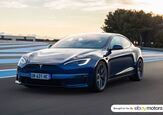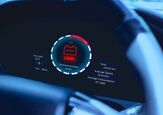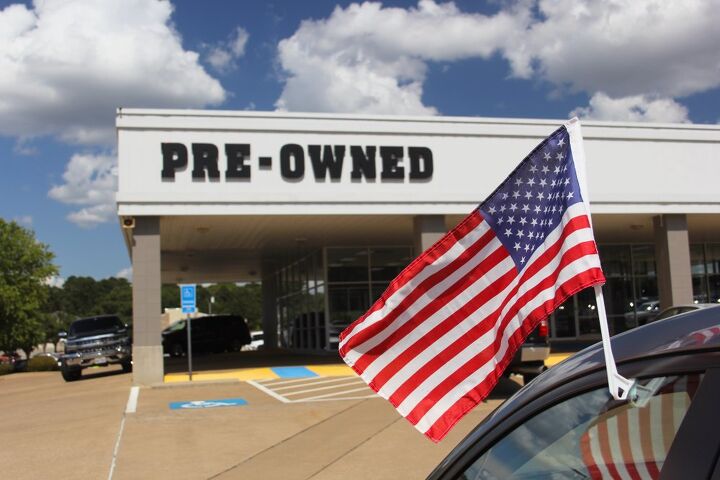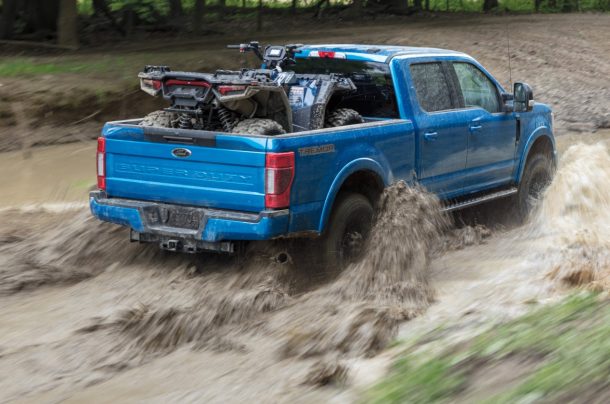#studies
Study: Average Annual Vehicle Ownership Cost Nearly $10,000
The average cost of owning a vehicle is now $9,666 per year, according to the American Automobile Association (AAA). While the sum is up substantially over the 2019 average of $9,282, 2020 was sitting at a much tighter $9,561.
Of course, none of this means anything to you unless you happen to drive the most typical vehicle in the most likely manner imaginable. The problem with coming up with a representative figure is that it doesn’t actually represent any one driver or automobile. But AAA was good enough to provide some basic calculation tools to help determine where you fall on the spectrum and some pointers on how to bring those rates down. Though the biggest factor remains which hunk of metal happens to be occupying your driveway.
Study Suggests EVs Cost More to Service
One of the reasons electric vehicles have been so polarizing is down to the near-constant proclamations that they’re the superior mode of transportation. But truth is usually a mixed bag and spending some time with EVs has shown them to have some serious blind spots that will need to be addressed if they’re ever to supplant internal combustion vehicles. Electrics aren’t always the better option, though they do boast features that make them extra desirable to some.
Among those was the promise that owning an EV yielded lower maintenance costs. But there’s a new study out claiming that’s not entirely true. Data is pointing to electrics actually having average servicing fees higher than traditional automobiles.
It's Not Just Pricing, Auto Loans Are Also Getting Out of Hand
As you’re undoubtedly aware, now isn’t the best time to purchase a new vehicle. While you can currently sell your ride for more than it’s realistically worth, the economy is anything but stable as inflation and supply shortages gum up the works. A lack of semiconductor chips has caused the automotive industry to stutter endlessly throughout 2021, with the issue getting so bad that some manufacturers have been building unfinished vehicles just to give their employees something to do. Ford is even mulling over a strategy to ship those units directly to dealerships so they’ll have something on the lot — effectively making its retail network responsible for final assembly.
But the logistics nightmare is only part of the story. Automotive loans are also becoming untenable as terms stretch out endlessly. Cars continue getting more expensive and the average consumer is losing their buying power. The preferred solution is for financiers to extend agreements so customers can continue making the same monthly payments while accruing more on interest over the duration. While effective in the short term, and bound to make banks money as we’re all driven deeper into debt, one wonders how this plays out on a grander scale.
IIHS Claims Marijuana Legalization Causes Crashes
It’s always nice to get a break from the endless stream of industry marketing materials about electrification, though this week’s impromptu theme still involves going green. Following news that General Motors is considering changing its drug testing policies to exclude marijuana, there has been heavy coverage of an Insurance Institute for Highway Safety (IIHS) study claiming states that have legalized recreational use of cannabis are seeing more crashes.
But the framing seems wildly irresponsible as it fails to highlight the problem being heavily tied to individuals operating a vehicle under the influence of marijuana and alcohol combined. It’s more or less what the IIHS attempted to do in 2018 with help from the Highway Loss Data Institute (HLDI). Our guess is that the duo is seeking out fresh reasons for insurance companies to raise rates in regions that have legalized pot because even their own research complicates the issue.
Used Car Prices Have Increased 30 Percent
We’ve been covering the staggering increase of automobile pricing all year, starting with the second-hand surge created by rental industries sucking up used models to replace all the vehicles they dumped during the pandemic. A year of suppressed demand and prolonged restrictions absolutely crippled supply chains and placed the automotive sector in an extremely difficult position going into 2021. We wish we could say things were improving but the most heartening news we’ve come across was the possibility that select manufacturers might soon have a line on semiconductor chips — hopefully encouraging new vehicle production.
But the used market is still heading into uncharted waters. According to data collected by CarGurus, the typical price for a used automobile increased by about 30 percent against this time last year. Though more worrying is how much of that spike is consolidated within the last 90 days.
VW CEO Suggests Fuel Cell Tech Isn't the Answer, No Duh
Volkswagen Group CEO Herbert Diess was bashing hydrogen-powered vehicles on Twitter this week in an attempt to convince those vying for Germany’s chancellorship not to embrace the technology. With Angela Merkel stating that she’ll not seek a fifth term, the country is open for new leadership and VW wouldn’t want them to take a liking to hydrogen power when it has placed all of its eggs into the electric vehicle basket.
“The hydrogen car has been proven NOT to be the climate solution,” Diess wrote on Twitter in German. “In transportation, electrification has prevailed. Sham debates are a waste of time. Please listen to the science!”
Pedestrian Deaths Ballooned Against Miles Driven Last Year
The Governors Highway Safety Association (GHSA) released the latest data pertaining to U.S. pedestrian fatalities — indicating that the largest-ever annual increase since we started keeping track in 1975. While the data is preliminary, the association estimated there were 6,721 pedestrian deaths in 2020. It’s a 4.8 percent increase over 2019 and not all that impressive until you realize most people basically gave up their normal driving routine during lockdowns. According to the GHSA, adjusting for miles driven actually results in an annual increase of 21 percent.
It’s genuinely creepy and kind of perplexing with everyone staying isolated. But we’re not going to recommend you start wearing high visibility jackets whenever you leave your home because the mathematical likelihood of being crushed by an automobile remains incredibly low.
Report: People Willing to Pay Stupid Prices for New Cars
While we’d like to get away from stories about everything becoming more expensive, everything actually is becoming more expensive and it looks like a healthy slice of the population is allegedly willing to go along with it. According to the latest data coming from Cox Automotive, roughly 40 percent of the U.S. population would purchase a vehicle at 12 percent above sticker. There’s always been a subset of shoppers who don’t know when they’re being taken but this represents a healthy share of the country.
It makes one wonder where these surveys were being conducted until Cox summarized the situation as the direct result of a populace beaten down by their environment. Apparently, people no longer expect to find good deals and have not yet reached the point where they’ll feel comfortable driving around in the same busted crate that’s seen them through the last decade as a way to save money.
F-Series Most Popular Vehicle in 18 States
The most popular car for 2021 isn’t a car at all, it’s the Ford F-series pickup. Among the top 10 most popular cars, the Silverado and the Tacoma, both trucks, join the F-150.
IIHS Study Underlines the Perils of Driver Disengagement
It turns out there’s a name for the false sense of security provided by modern driving aids. According to researchers with the Insurance Institute for Highway Safety (IIHS) and the Massachusetts Institute of Technology’s AgeLab, the phenomenon is called “driver disengagement” and it’s assumed to be a contributing factor to roadways fatalities. The duo recently published a rather basic study examining how evolving automotive technologies might be eroding safety under the guise of progress.
Since we’ve been onto the perils and shortcomings of advanced driving aids since their introduction, it also provides us with another stellar opportunity to gloat. Heck, our criticisms go back far enough to predate any reputable research on the matter. We were just bitter cranks then, annoyed that the systems seemed unworthy of our trust despite constantly demanding it. But the IIHS said its latest testing found motorists frequently lose focus while utilizing features like adaptive cruise control and lane-keeping. This issue reportedly worsens the more familiar drivers become with the systems, which would be fine if they could be counted on for total effectiveness. Sadly, there’s been more than enough testing for us to know that’s not the case.
J.D. Power: Totally Changing Society Hasn't Made People Want Electric Vehicles
Despite governments the world over practically forcing electric vehicles down our collective throat via stringent emission standards, the average person living in North America hasn’t changed their mind on them. According to a recent survey by J.D. Power, the “Mobility Confidence Index” for battery-electric vehicles remains largely neutral.
Even as global lockdowns have made them a more viable option, with more people working from home and driving fewer miles every week, North Americans aren’t budging. In fact, citizens of the United States may actually be turning on EVs while Canadians remain slightly more agreeable — something that probably extends beyond the automotive realm.
Study: U.S. Driving Distances May Have Already Peaked, What About Ownership?
North America has changed immensely under the pandemic. The government tested what it could get away with under the premise of health-and-safety-related lockdowns; countless small businesses have gone belly up while larger entities seem to be thriving. Meanwhile, we’ve been informed that nature is returning to urban environments as humanity forced itself to stay indoors. Waters cleared, the air was purified, and animals ventured deeper into our territories while we sheltered in place. It was if Homo Sapiens had finally been demolished, providing Mother Earth a prime opportunity to patch herself up.
For a time, there was even a period where you could enjoy open, nearly enforcement-free roadways. Some cities, including mine, saw traffic declines in excess of 40 percent during the opening weeks of the virus response. While this ended when New York City brought in those temporary (and wildly unpopular) quarantine checkpoints at major crossings and attempted to open up for commerce, it still seems like far fewer individuals are driving overall.
That’s because there are. People just don’t need to venture out of their homes as much in 2020 and it is not just the lockdowns contributing to this change. Ordering items online has played a major factor, as does the increased reliance on at-home entertainment. In fact, a new study has suggested Americans may never drive as much as they did just a decade ago. This seems especially likely with so many companies encouraging office-based employees to continue working from home indefinitely, flushing millions of daily commutes down the proverbial toilet.
Euro NCAP Develops Assisted Driving Assessment, Bashes Autopilot
The European New Car Assessment Programme (Euro NCAP) has finished a study on driver assistance systems and issued some moderately surprising results. While nowhere near comprehensive enough to be the ultimate authority on self-driving cars, it did give us a taste of Europe’s new grading system and how it will be implemented as more vehicles are tested. For now, NCAP is focused on a handful of models ranging from the pedestrian Renault Clio to the much more expensive Mercedes-Benz GLE.
While one might expect the moral of the study to be roughly ‘you get what you pay for,’ the reality seemed much more complicated after the Tesla Model 3 ended up in sixth place out of a possible ten. Anybody who has ever used Tesla’s Autopilot will tell you it’s probably the most impressive advanced driving suite currently on sale. This author certainly would before the smile dissolved and he was forced to you that it (and other) driving assistance packages are horrible, misleading inventions that need to be gotten rid of as soon as possible.
Study: De-funding the Police Seems to Reduce Traffic Stops At Least
As you’re undoubtedly aware, there has been a lot of pressure to de-fund the police this year following the highly publicized death of George Floyd in Minneapolis, Minnesota. The city became the epicenter of violent and peaceful protests demanding police departments be stripped of funding that has since spread across the rest of the United States. Some cities, including Minneapolis, have already agreed to cut their budgets or abolish departments entirely.
While most of the ramifications of these decisions would be off-topic for this particular forum, a study came out this week examining how on-road policing has been impacted. Unsurprisingly, the number of traffic stops in Minneapolis has declined immensely. Since May 25th, Bloomberg’s CityLab estimated the department had made 80 percent fewer stops each week.
U.S. Car Sales Are Down, Average Transaction Prices Are Up
Yesterday, we covered how the economic ramifications of the pandemic has negatively impacted the sales volume of electric vehicles (the ones that aren’t status symbols, anyway) in the United Kingdom. We’ll take a broader view of things today, focusing entirely on the general sales trends taking hold in the United States ahead of the Labor Day weekend.
Under normal circumstances, this would be a period where dealerships tempt the public with juicy discounts to clear out their lots for the subsequent model year. But the pandemic has left factories idle for months and vehicles in short supply. While that wasn’t an issue when everyone was first locked indoors, many states allowed their citizens to reclaim their autonomy as dealers sought new ways of selling without the face-to-face rigamarole of interacting with customers directly. We’re now in a situation where demand remains suppressed but has increased to a level where it outpaces the supply of many popular models — increasing the average transaction price of vehicles.
It’s not a great time to be shopping for a car.






























Recent Comments